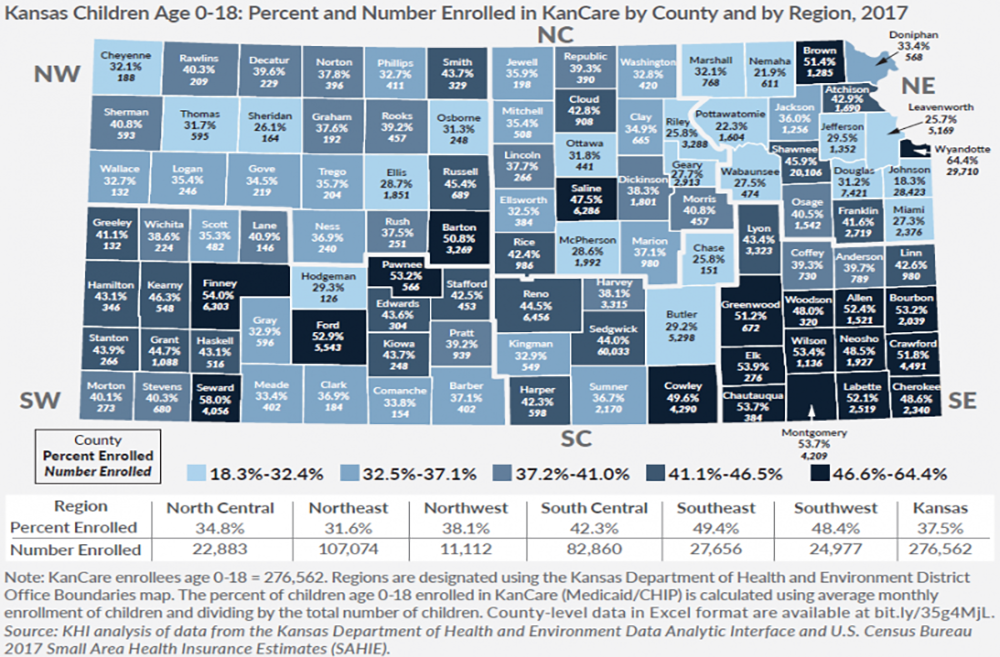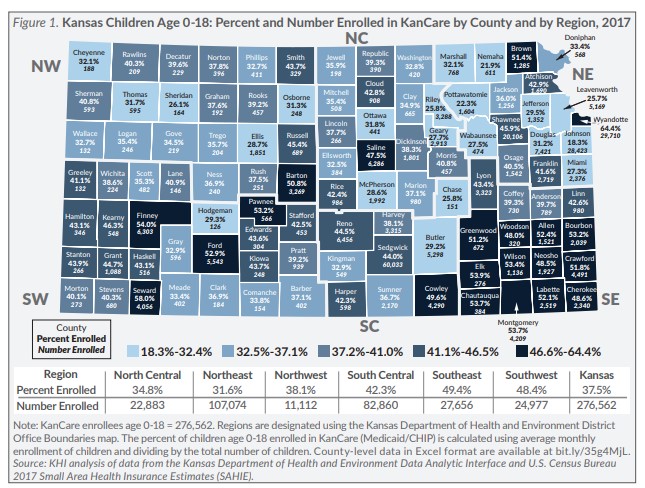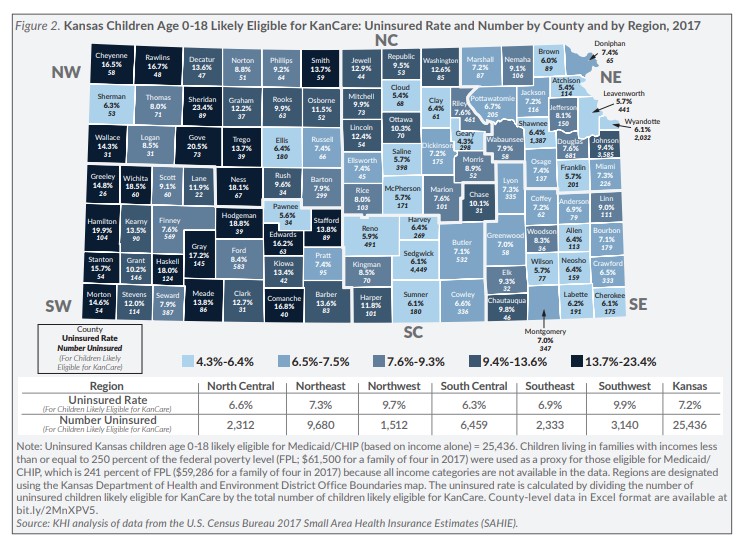Likely Eligible, but Uninsured
An estimated 37,982 children in Kansas were uninsured in 2017, and 25,436 (67.0 percent) of them might have been eligible for KanCare but were not enrolled (Figure 2).
Many counties in western Kansas had a significantly higher uninsured rate among children likely eligible for KanCare than the statewide rate (7.2 percent). The highest uninsured rate (23.4 percent) was in Sheridan County, representing 89 children. The northwest region of Kansas as a whole had a rate of 9.7 percent, representing 1,512 children. The southwest region had a rate of 9.9 percent, representing 3,140 children.
The uninsured rate for KanCare-eligible children generally was not as high in more populous areas of the state. However, nearly half (47.7 percent) of uninsured children likely eligible for KanCare lived in one of the five most populous counties — Douglas, Johnson, Sedgwick, Shawnee and Wyandotte — representing 12,134 children.
Conclusion
Reaching children and families who are eligible for KanCare could be particularly challenging in rural areas of the state. Partnering with local organizations is an important strategy to facilitate enrollment.
Technical Note
The U.S. Census Bureau’s Small Area Health Insurance Estimates (SAHIE) data is the only data source for single-year county-specific estimates for health insurance coverage (http://www.census.gov/programs-surveys/sahie/about.html). SAHIE estimates for health insurance coverage at the state level could differ slightly from those derived from other data sources because of differences in methodology.
Access additional publications in the Documents & Downloads section.


